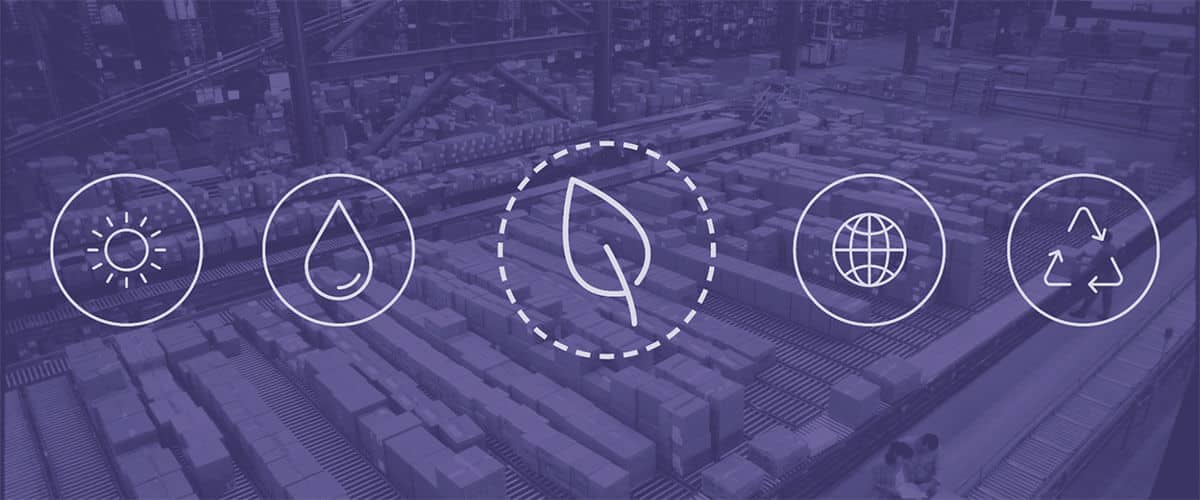Steps to Starting Your Eco-Fulfillment Journey
Much like the industry’s slow adoption of automation and robotics, warehouse operations have been historically resistant to switching to sustainable or “eco-friendly” practices. In fact, until recently, there were very few fulfillment services or third-party logistics (3PLs) providers concerned with their environmental impact – let alone making it the focal point of their brand.
But times have changed, and efforts towards sustainability are now expected by more clients and customers than ever before. Unlike in previous decades where environmentally conscious buyers were considered a niche sector to sell to, a majority of today’s consumers are holding companies accountable for their carbon footprint and efforts to evolve.
According to IBM, at least 57% of consumers are willing to change their buying habits to support sustainability, and that number is even larger with younger generations. Perhaps it is because 60% of global greenhouse emissions are the result of supply chain activity, a concerning statistic when one considers the ongoing rise of ecommerce.
Sustainable warehousing has become a critical element in sustaining customer loyalty and a competitive advantage for the future of ecommerce fulfillment. Let’s talk about the benefits of going green and how to get started on your warehouse sustainability journey.
In this guide, we’ll explore:
The Advantages of Sustainable Warehousing
Simply put, sustainability is the ability to meet your clients and consumers’ needs without compromising the needs of future generations. With each passing year, buyers are consciously choosing to shop in a way that aligns with their personal values, even if that means abandoning brands, retailers and online markets they once bought from regularly.
For warehouse operators who are unsure of where to begin the sustainability journey – or for those of you who are unsure if an eco-approach is truly worth it – it is important to remember small steps can lead to big results. Moreover, sustainable warehousing can help save money, bring in new buyers, and retain customers/clients longer.
Some other key benefits of sustainable warehousing include:
-
- Ensuring business longevity: Sustainability is not just about reducing one’s carbon footprint, but ensuring the long-term adaptability of your operations. Taking steps to be more environmentally responsible allows you to pass on a sustainable business that is more likely to succeed competitively and in a healthier ecosystem.
- Nurturing a positive brand image: Moving towards sustainability is a pragmatic business decision that helps enhance your business’s reputation and customer loyalty. You can go green now or later, but being an early adopter sets your company apart during a critical turning point in the industry. Making your warehouse processes more sustainable shows the market you are a leader, adaptable to change, and building a legacy you believe in.
- Driving economic growth: Sustainable warehouse operations can act as an economic driver when executed correctly. Because sustainability helps save money on operational expenses like electricity (lighting), fuel (transportation) and storage supplies, updating your practices can boost operational efficiency and improve your bottom line to allow for growth.
- Staying ahead of compliance: Due to the growing impact of climate change and the supply chains’ effect on it, many state and federal-level agencies have created compliance regulations to hold companies accountable for their impact on the environment. If you are already taking steps towards sustainability, you are less likely to face fines or other penalties in the days ahead.
Having a sustainable warehouse design and employing green warehousing techniques ultimately minimizes the negative impact of your operation on the environment, economy and society, while simultaneously maximizing its positive impacts.
For more insights on the competitive benefits of transitioning to sustainable fulfillment practices, check out our QuickTake webinar, “How 3PLs Win Through Sustainable Fulfillment Practices.”

Steps for Beginning Your Sustainable Warehousing Journey
Adopting sustainable warehouse practices can be daunting, but the transition does not need to happen all at once. Here are some of the key ways to achieve profitable, sustainable fulfillment operations one step at a time.
Make changes to your warehouse facilities.
There are a lot of ways to start evolving your sustainability efforts, but updating your facility is one of the fastest and easiest ways to get started. Assess how your warehouse utilizes energy, the types of buildings you are operating in, and how you can facilitate changes to your environment. Here are some examples:
-
- Use LED lights for a lower energy footprint
- Implement motion tracking lights, so lights are only on when activity is happening
- Upgrade your bathroom to improve water efficiency (eco-toilets, motion sensor sinks, etc.)
- Ensure your warehouse facilities are close to public transportation for employees (or promoting the use of carpooling-type services)
- Make uses of natural lighting
- Paint your roof white to help keep your facilities cool
- Install solar panels on your roof
- Achieve LEED rating
Invest in carbon offsets.
Some of today’s top sustainable 3PLs are practicing sustainability by offsetting their carbon footprint for every shipment that leaves their warehouse. Consider making a formal commitment to support reforestation, carry out sustainability initiatives, and work with organizations to restore and protect Earth’s natural resources.
Use a WMS that optimizes shipping.
With the right WMS, you can route orders from the closest warehouses in order to minimize transportation and streamline integrations to multiple eco-friendly shippers/carriers. You can also assign specific automation rules so that specific rules (ex. packaging) are followed. All can ultimately reduce the amount of carbon emissions you produce to achieve high-efficiency order fulfillment.
Minimize trash and facility waste.
It goes without saying, but using less packaging and plastic is an ideal early step when beginning sustainable warehousing. There are countless ways to make packaging more eco-friendly: from switching to biodegradable, curbside recyclable shipping materials… to choosing containers based on the smallest, safest dimension and using environmentally sound packaging fillers.
Sustainability and WMS Technology
There are countless ways to get started in creating a sustainable warehousing approach, and the good news is that you are not alone. Working with community partners and other environmentally responsible businesses is a great way to learn new techniques and approaches for enhancing your sustainability efforts.
Logiwa was built to maximize visibility into warehouse operations and provide the control you need to transition to eco-focused practices and automating warehouse workflows to prioritize sustainability. Our embedded analytics and reporting tool makes it easy to see where your operation has room for improvement, and our warehouse automation rules make it easy to execute smarter order routing, carrier selection, and material-use for eco-friendly fulfillment.
Logiwa WMS was designed for the next generation of warehousing.
Adjust quickly to ever-changing fulfillment requirements with the most flexible WMS
Warehouse Management
Modern digital WMS powers a modern fulfillment experience






